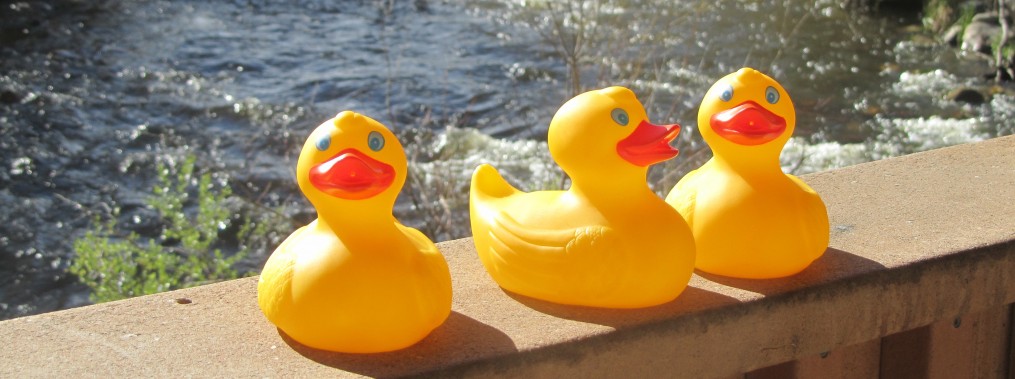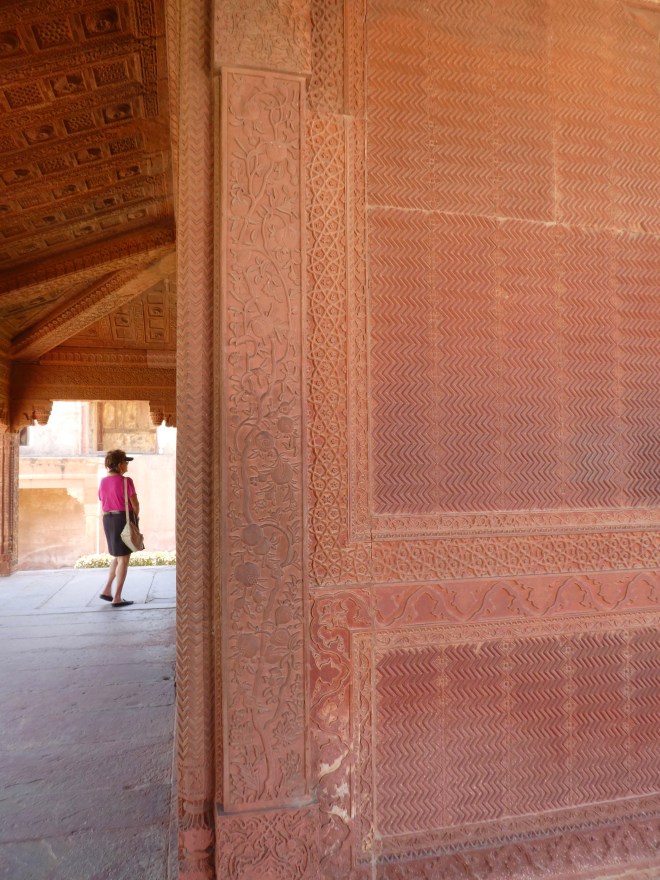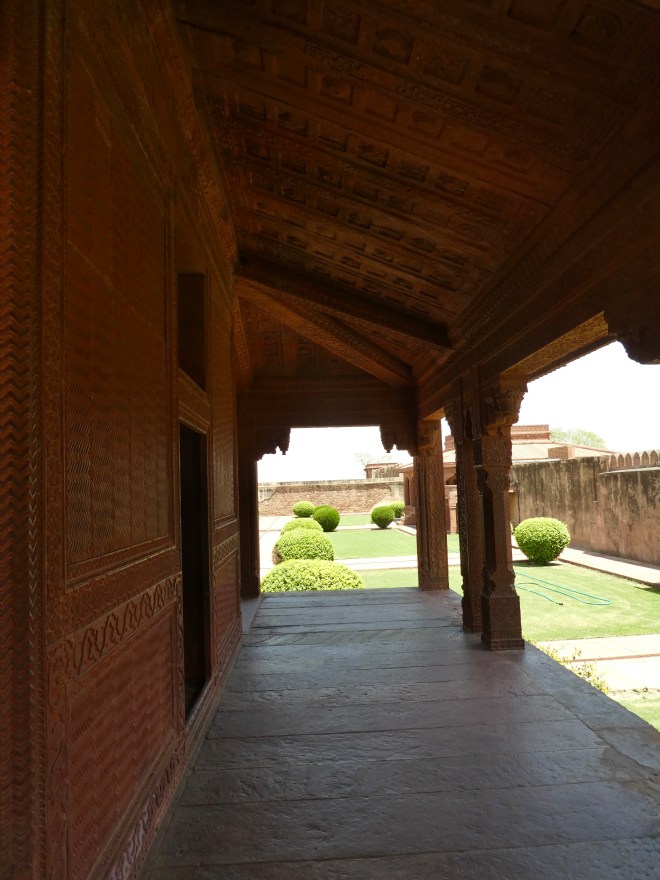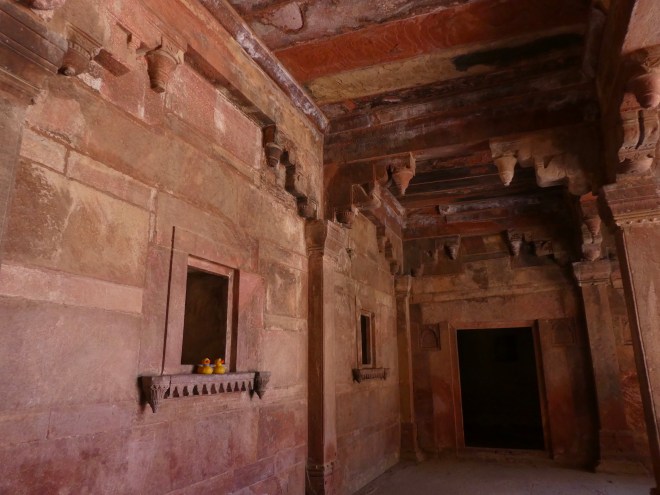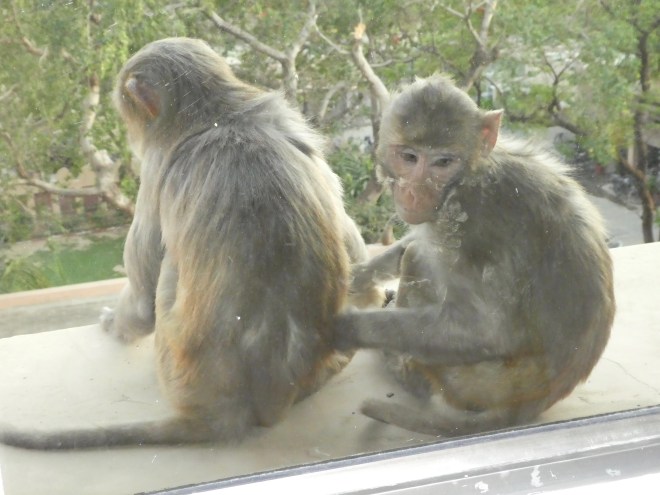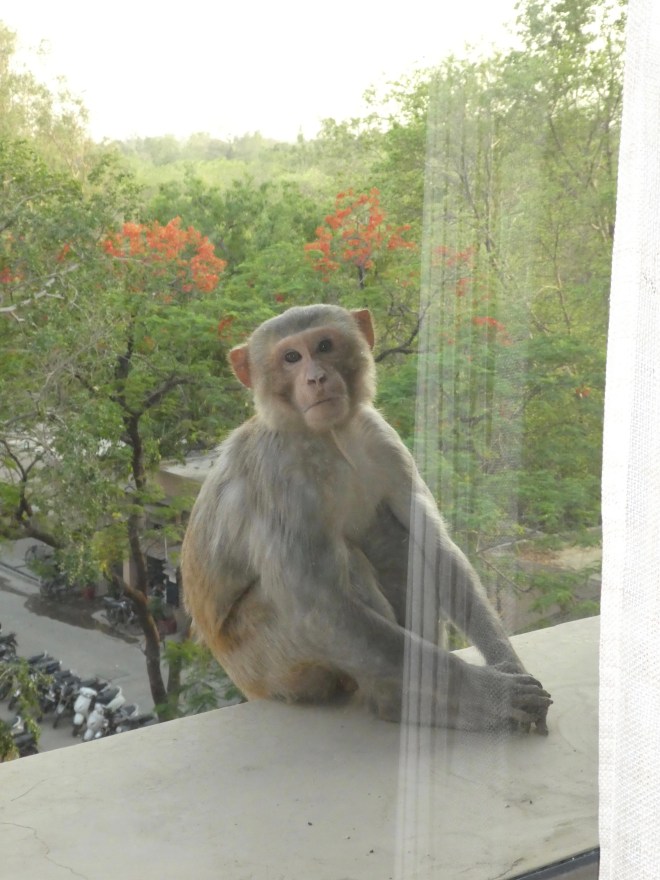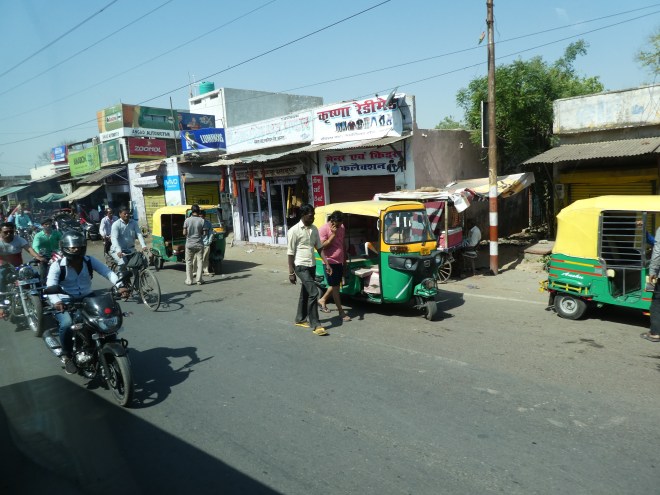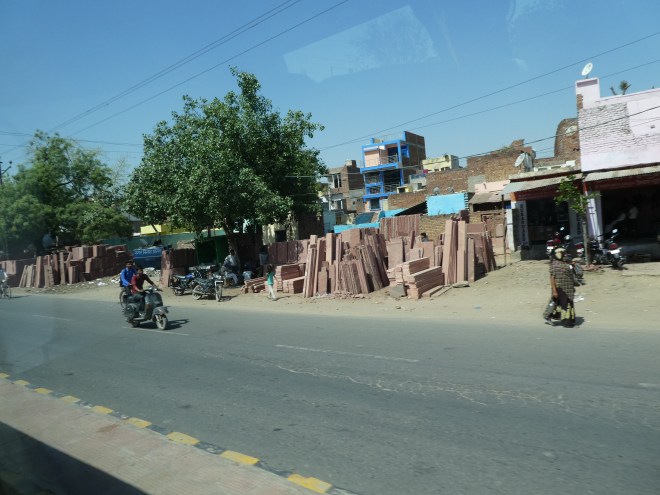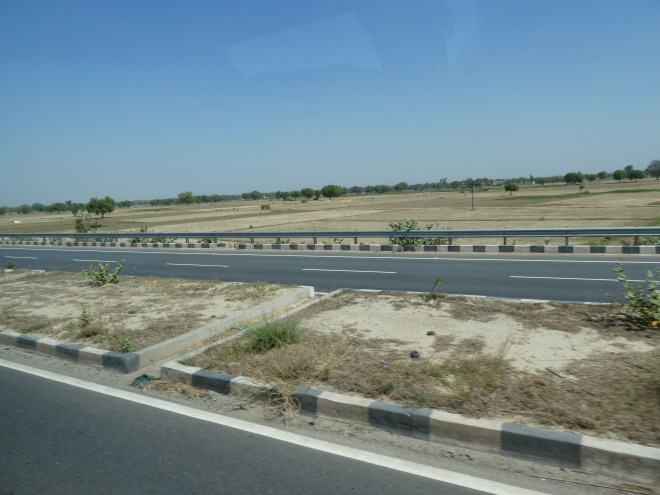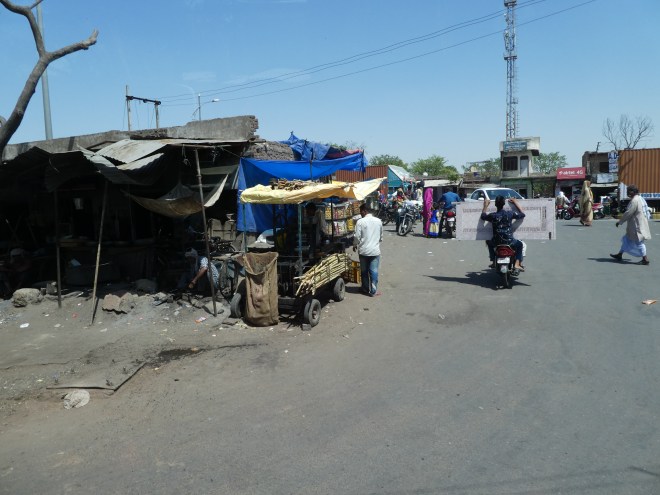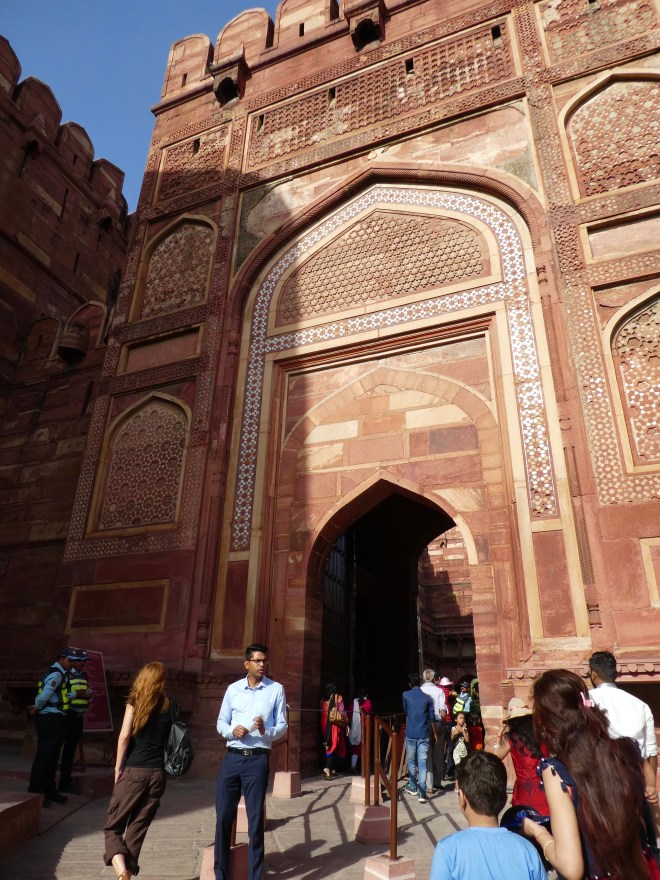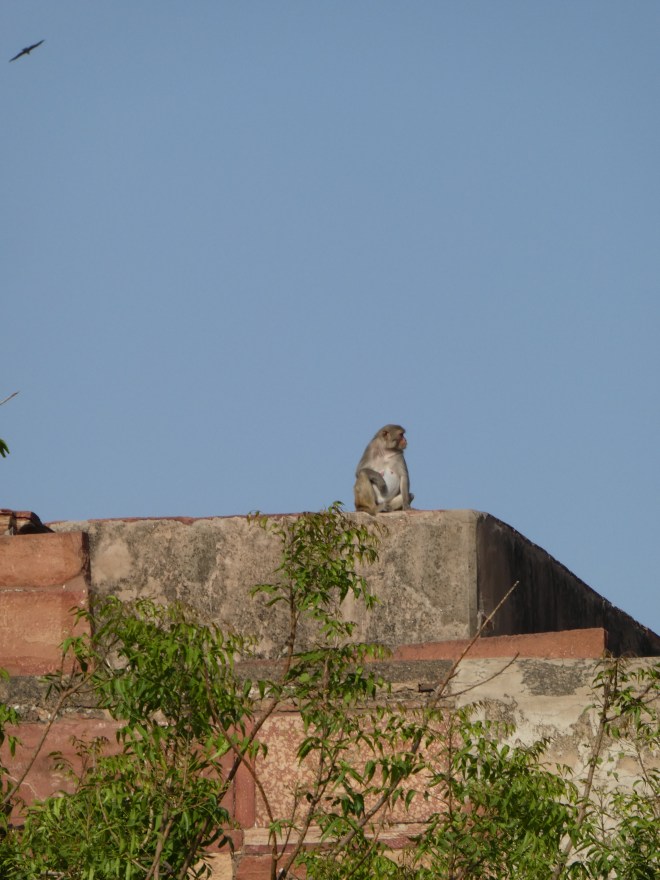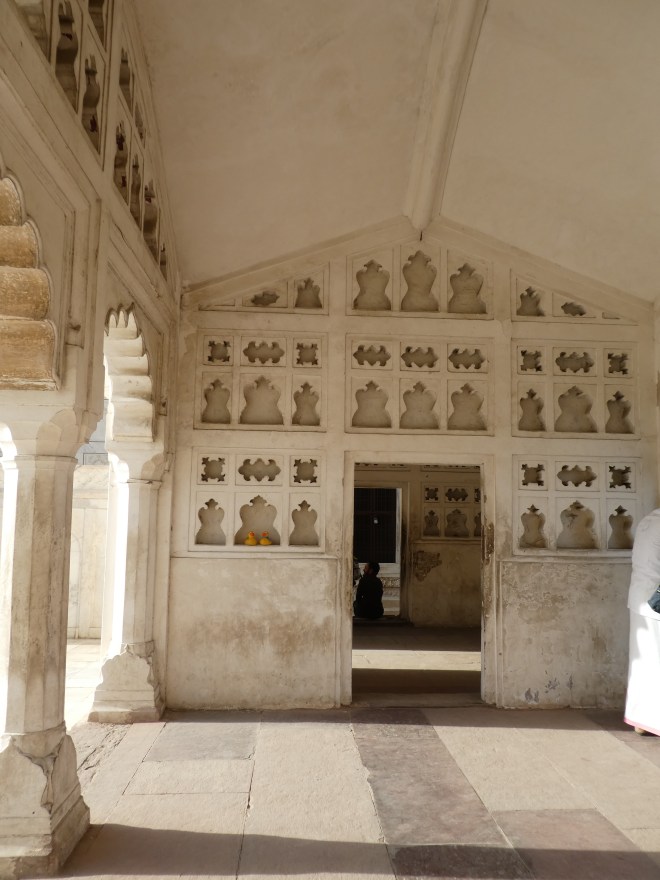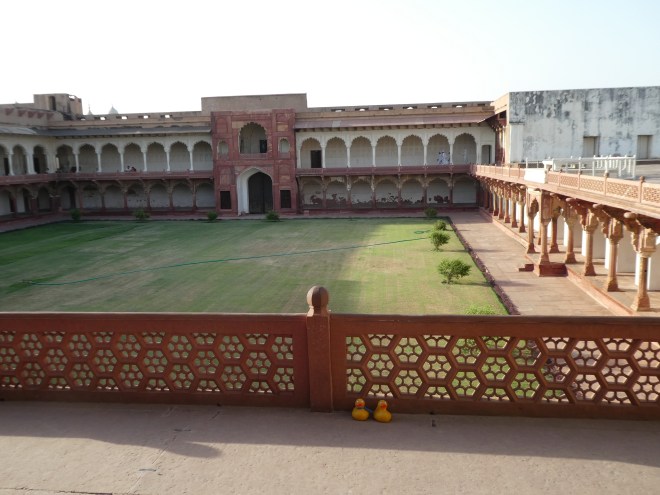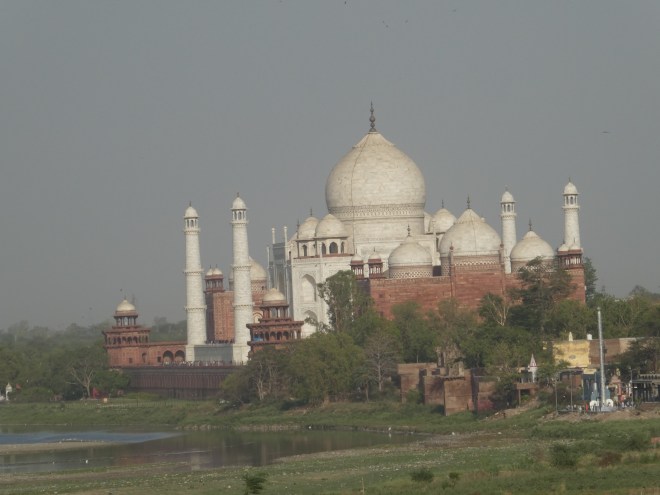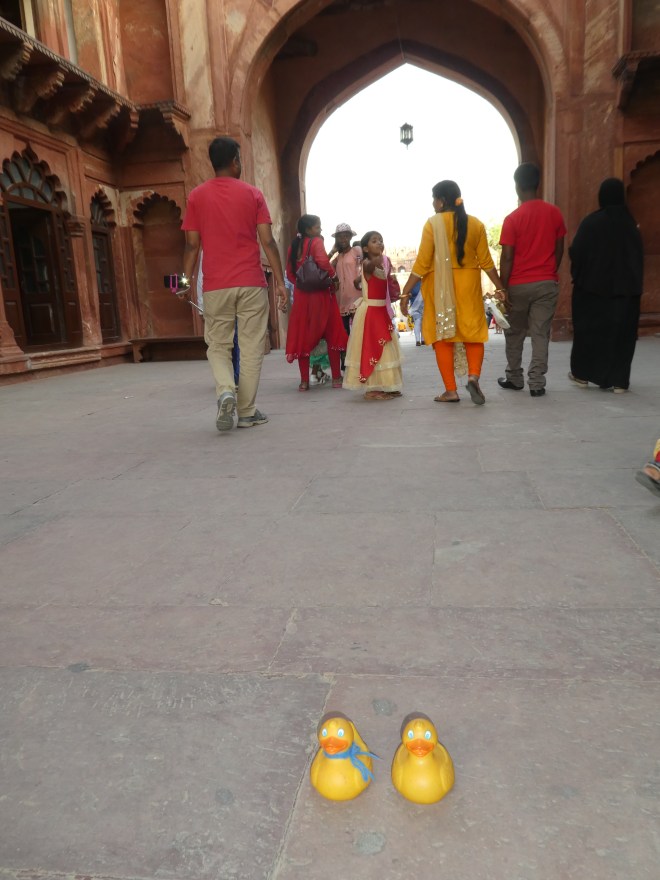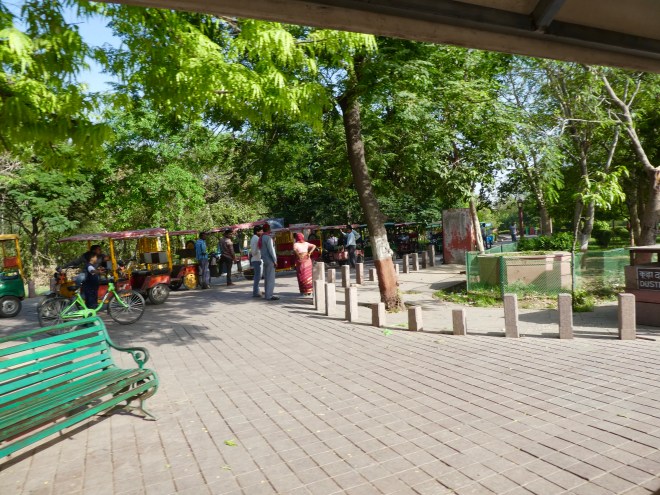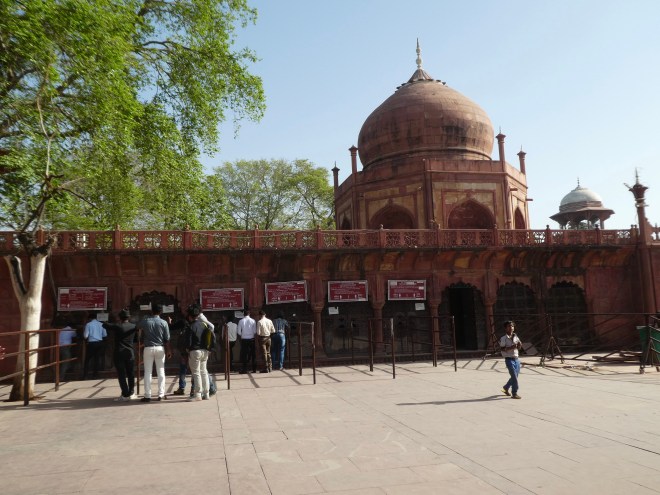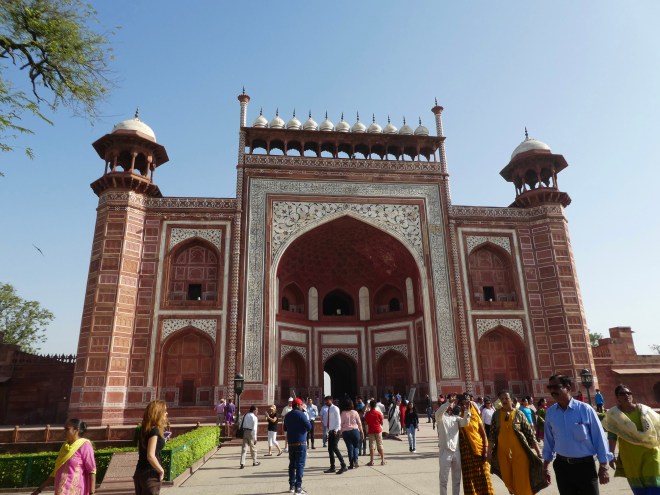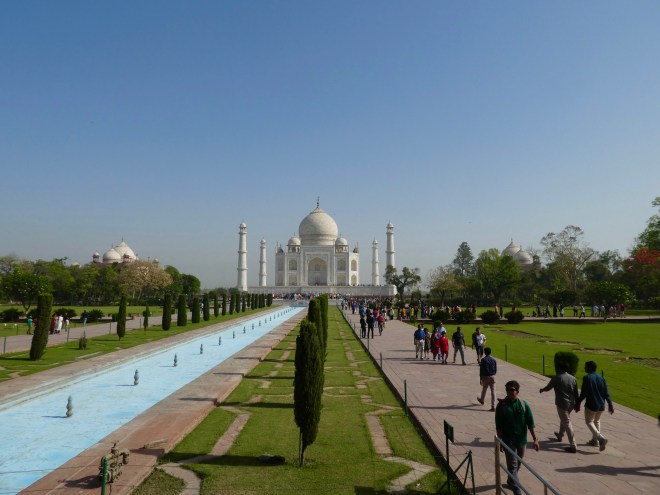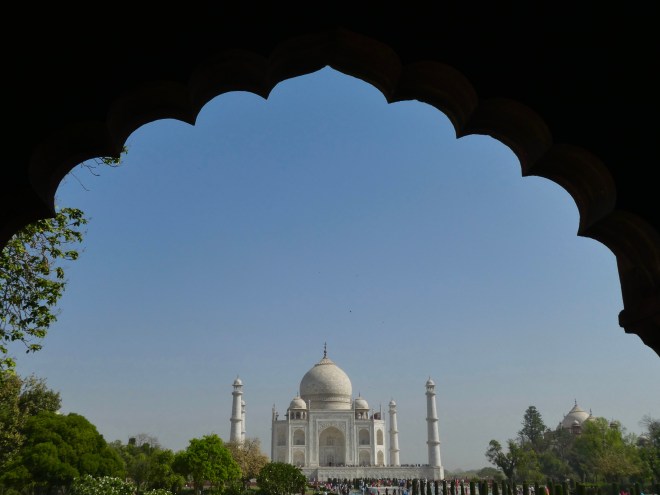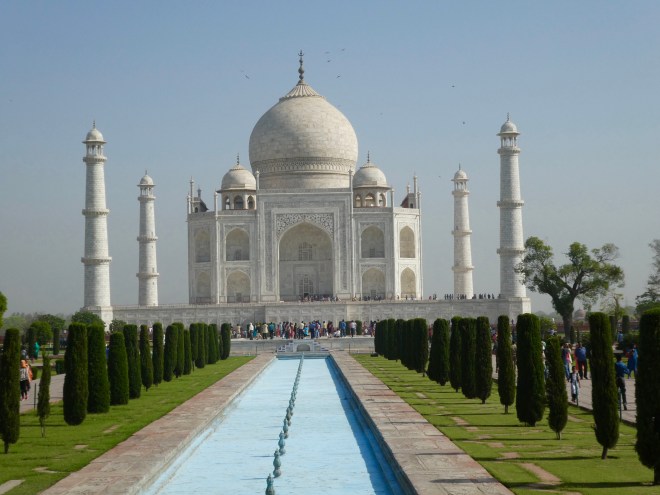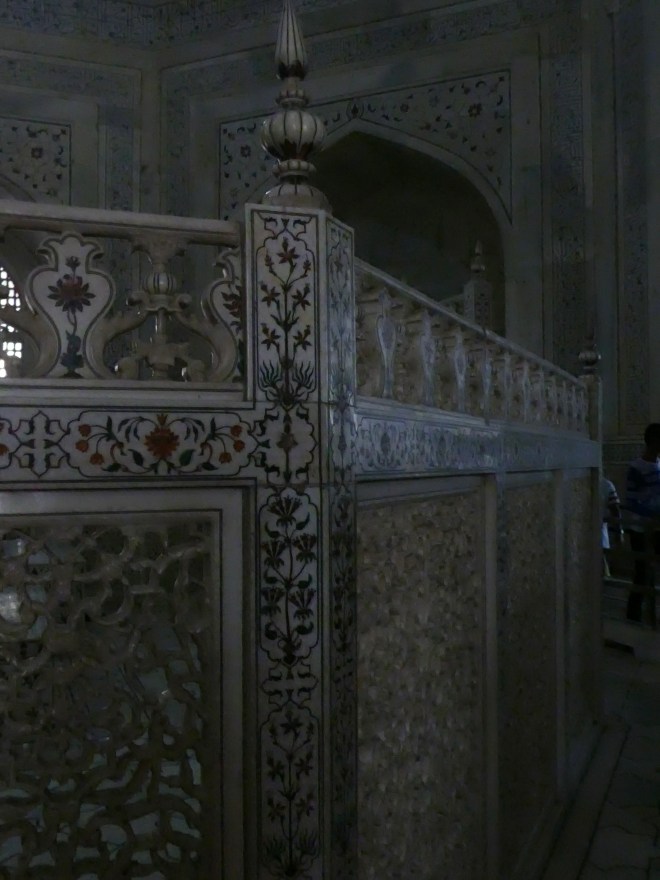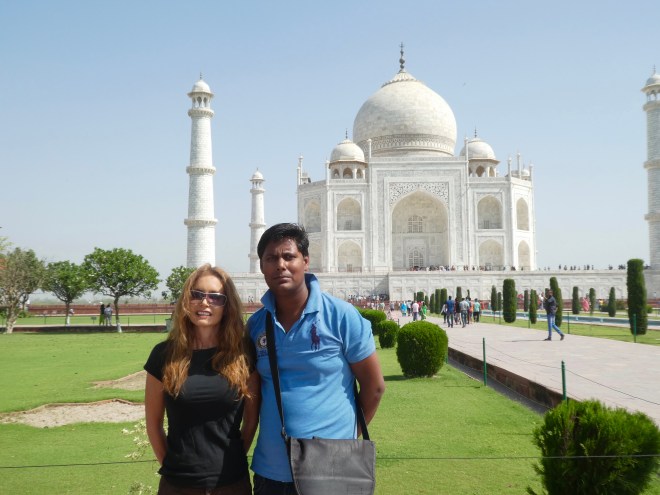Fatenpur Sikri is an elaborate complex that served as capital of the Mughal Empire for only 16 years. Emperor Akbar visited this area to consult the Sufi saint, Shaikh Salim Chishti, who predicted the birth of his heir. When the prophecy came true, Emperor Akbar built his new capital here. He included three palaces, one for each of his favorite wives. One wife was a Muslim, one wife a Hindu, and one wife a Christian. Let’s enter this complex.
After entering the gate, but before the main complex, ruins are visible.
Emperor Akbar reigned from this capital for only 16 years, from 1570 to 1586. It is believed this city was abandoned shortly after Akbar’s death, due to water shortages. The first building is Diwan i Am, the hall of public audiences.
The lawn is beautiful. We were told and also read in our guidebook, that justice here was served quickly. If someone did something that resulted in the death penalty, it was quick. Elephants would trample the guilty one to death. Sometimes, the guilty person laid down and the elephant crushed his head. Maybe we ducks are glad we do not have elephants in our home town. Inside Diwan i Khas, we admired great detail on the central stone column.
We have noticed and appreciated the beautiful craftsmanship through our visit to India. Every detail is intricate. Wandering around the grounds, we found, or more accurately, we were found by the photographers.
Here Soapy Smith’s mom is holding another building. We like the photographers. They are trying to earn a living, and we get great photos and memories of our time in India. There are a few of this size building.
Maybe buildings for a favorite wife? We don’t remember everything we were told, but we admire the architecture.
Here is another example of much attention to detail. Isn’t this door fabulous? Buildings were constructed with the hot summer in mind.
This hall provides a cool location and much needed shade. We like this sculpture.
We are not sure what it symbolizes and we cannot find information in our guide books. Here we are, sitting on the windowsill, enjoying the shade and marveling that all these huge buildings and complexes were built without any machinery.
Today, every construction site has a large variety of heavy equipment and safety equipment for the projects. We hope you enjoyed a quick overview of Fatenpur Sikri. This site is only 40 km (about 25 miles) west of Agra. We enjoyed seeing this former capital of the Mughal Empire.
